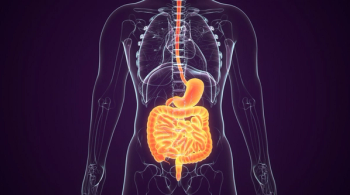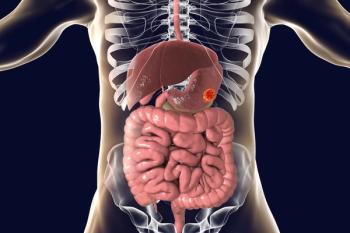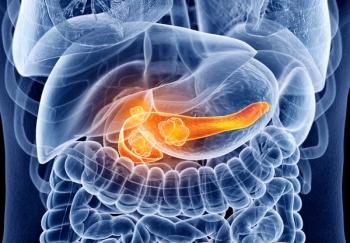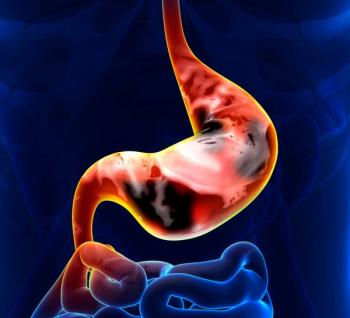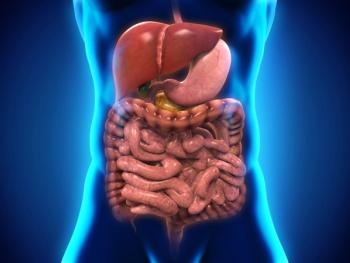
Oncology NEWS International
- Oncology NEWS International Vol 12 No 9
- Volume 12
- Issue 9
XELOX (Capecitabine/Oxaliplatin) Regimen Is Safe and Active in Elderly Patients With Advanced Colorectal Cancer
CHICAGO-The XELOX regimen, which combines oral capecitabine (Xeloda) and oxaliplatin (Eloxatin), was safe and "highly active" in a phase II study of 35 elderly patients with advanced colorectal cancer. On behalf of the Southern Italy Cooperative Oncology Group, Pasquale Comella, MD, of the National Tumor Institute, Naples, presented the study in a poster at the 39th Annual Meeting of the American Society of Clinical Oncology (abstract 2939).
CHICAGOThe XELOX regimen, which combines oral capecitabine (Xeloda) and oxaliplatin (Eloxatin), was safe and "highly active" in a phase II study of 35 elderly patients with advanced colorectal cancer. On behalf of the Southern Italy Cooperative Oncology Group, Pasquale Comella, MD, of the National Tumor Institute, Naples, presented the study in a poster at the 39th Annual Meeting of the American Society of Clinical Oncology (abstract 2939).
Dr. Comella said that this trial was launched because preliminary studies had shown that capecitabine given orally for 2 days every 3 weeks has similar activity and a better toxicity profile than IV leucovorin-modulated 5-fluorouracil for 5 days (Mayo regimen) in advanced colo-rectal cancer. The XELOX regimen of oxaliplatin 130 mg/m2 combined with capecitabine 1,000 mg/m2 twice daily every 3 weeks was safe and highly active. "This combination could also be a suitable option for elderly patients," Dr. Comella said.
In this phase II trial, patients aged 70 years or more with advanced colorectal cancer were treated with XELOX every 3 weeks, using an intrapatient dose escalation if no grade 2 or higher toxicity was reported on the previous cycle. Cape-citabine was escalated from 1,000 to 1,250 mg/m2 twice daily on days 2 to 15. Oxaliplatin was escalated from 85 to 100 mg/m2 on day 1, with cycles repeating every 3 weeks.
The ASCO presentation included data for 35 patients, aged 70 to 81 years (median, 75). Eight patients (23%) had previous treatment with adjuvant therapy. Nineteen (54%) were symptomatic, 19 (54%) had two or more sites of disease, and 14 (40%) had a previous loss of body weight.
The median number of cycles delivered was 6 (range, 1 to 12 per patient). Oxaliplatin was escalated in 18 patients, and mean dose intensity over 3 cycles was 28.7 mg/m2/wk. Capecitabine was escalated in 4 patients, and its median dose intensity over 3 cycles was 8.4 g/m2/wk. The corresponding median doses over 6 cycles were oxaliplatin 27 mg/m2/wk and capecitabine 7.8 g/m2/wk.
Study Results
"Two complete responses and 11 partial responses were achieved, giving a 37% response rate according to intent-to-treat analysis," Dr. Comella said. Median duration of response was 6.9 months.
There was minor reduction of tumor mass in five patients, coupled with a 50% or more reduction of basal CEA levels in three of the four patients who had abnormal CEA levels at baseline.
Twelve patients had stable disease lasting at least 4 months. "Therefore, at least a temporary control of tumor growth was reached in 25 patients (71%)," Dr. Comella said. With a median follow-up of 10 months, the 1-year probability of survival was 58%, he added.
Severe diarrhea occurred in three patients (9%), four (11%) developed grade 3 neuropathies, and mild to moderate hand/foot syndrome occurred in three (9%). Dr. Comella told ONI in an interview that the neuropathies tended to resolve within 2 weeks and that persistent neuropathy at the time of the next scheduled 3-week cycle was "not a big problem." In some patients, oxaliplatin was stopped and capecitabine continued as monotherapy for 3 or 4 months until neuropathy resolved, but this was not usually necessary.
The researchers are now testing a new XELOX regimen, he said, in which the oxaliplatin dose will be 85 mg/m2 in the first cycle, 110 mg/m2 in cycle 2, and 130 mg/m2 in cycle 3, while the cape-citabine dose remains at the 1,000 mg/m2 twice daily level.
Dr. Comella told ONI that 15 of the 65 anticipated patients have already completed three cycles of treatment and that he expects the trial to be complete by the end of the year.
Articles in this issue
over 22 years ago
Stroke a Late Effect of RT for Medulloblastomaover 22 years ago
Proteomic Patterns Find Ca in Men With High PSAover 22 years ago
Photofrin for Barrett’s Esophagusover 22 years ago
VEGF Inhibitor Extends Survivalover 22 years ago
Gefitinib Fails to Stem Malignant Mesotheliomaover 22 years ago
Trastuzumab Shows Limited Promise in Non-Small-Cell Lung Cancerover 22 years ago
Gefitinib Shows Modest Activity Against Recurrent GlioblastomaNewsletter
Stay up to date on recent advances in the multidisciplinary approach to cancer.


